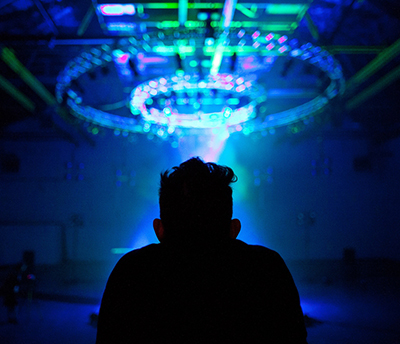For a more enhanced experience, PS122 has committed to commissioning program notes for each major production. We’re hoping that through these writings we can provide a deeper connection to the ideas that are prevalent throughout the work or the artist’s body of work and how these ideas relate to contemporary issues permeating throughout society. Our goal is to foster dialogue so if you feel compelled to share your thoughts, leave a comment.
Program Notes for COIL 2016: Confirmation by Chris Thorpe & Rachel Chavkin
Notes written by Rachel Chavkin
“A lot of politics is about telling people who they are” – note from a discussion with Professor Mark Harrison University of Warwick Economics Department
We began with the basics: the biology behind the bias, how it functions in the world in areas ranging from journalism to scientific research, and the challenge of spotting it in oneself. Underneath the investigation lay Chris’ wrestling with the atrocities Anders Breivik committed in Norway in 2011. He was wondering if Breivik had felt heard by the world, would he have done what he did? We wanted to know if it is possible to truly listen to an opposing point of view. And what might be broken or healed in the process of trying.
I came across Daniel Kahneman’s Thinking Fast, Thinking Slow just after it had been released, and Chris met with a number of academics at Warwick University, working in fields ranging from psychology to economics. He was directed to Jonathan Haidt’s The Righteous Mind. Both books posit this image of the mind as “the rider and the elephant.” As much as we’d like to believe our decision making process is rational or conscious, most cognitive psychology research has proven that David Hume was correct when he said, “Reason is, and ought only to be the slave of the passions, and can never pretend to any other office than to serve and obey them.” The conscious level of our thinking exists largely to justify or rationalize what the subconscious decided many, many nanoseconds ago.
Over Skype and periodically in person (at Warwick Arts Centre, in New Haven, etc.), Chris and I talked about the narratives that liberals hold onto, particularly the belief that if someone is educated and cared for on personal and societal levels, then they will naturally be liberal. Chris began looking for someone with opposing political beliefs whose external profile matched his own: white male, British, educated, middle class. He vanished down rabbit holes of online comments and white supremacist websites, went to conservative political meetings, and all this finally brought him to “Glen,” our generous partner on this work. Glen and Chris began to talk via Skype, and ultimately carried on their conversation for over 8 months. I gave writing prompts and Chris used those to synthesize the research into material. Confirmation is the result.
© Photo by Maria Baranova

